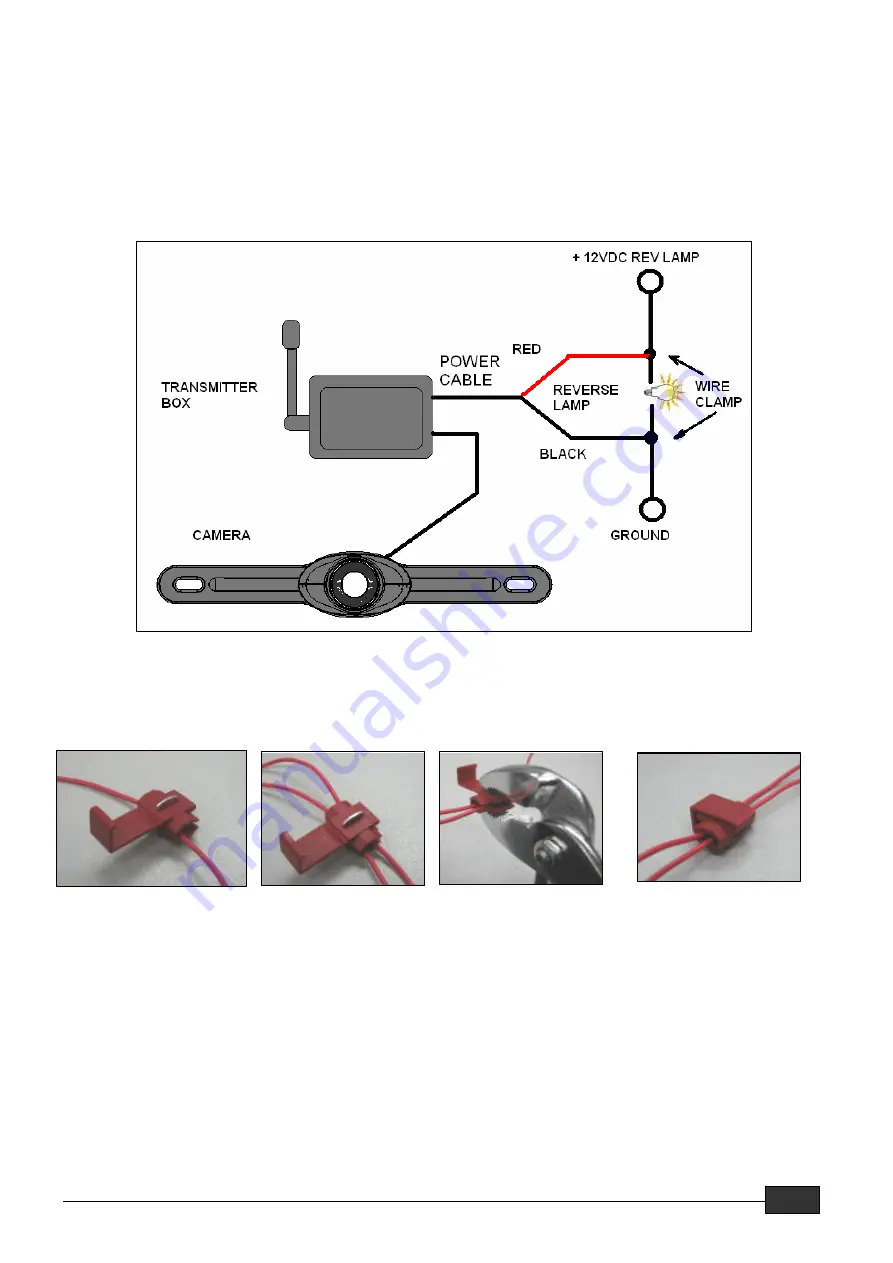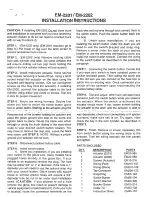
23.Once you have located the reverse light circuit, you need to route the power cable supplied to
that location. Fasten the power cable securely to prevent it from being caught on any vehicle
component like the trunk hinge.
Never
route the cable on the outside of the vehicle.
24.Locate reverse light socket and remove light bulb. There are two wires connected to the
reverse light sockets on most vehicles. Usually the negative wire is black and the positive
wire is a colored wire. If you are uncertain about the wiring, use a 12 volt multimeter
(available at most auto parts stores) to determine which wire is positive. Follow the
manufacturer’s instructions for the safe use of the multimeter.
25.After determining which wire is the positive and which is the negative, turn off the ignition key,
then remove the battery’s negative cable.
26.Splice the red wire using the supplied wire clamp to the reverse light’s positive (+) wire. Use a
set of slip joint pliers to squeeze the METAL BLADE and insure good connection of both
wires.
Insert the existing wire
Insert the wire to be
Crimp clamp with pliers,
to be tapped to the clamp.
attached to the clamp.
then close lock
27.You may not need to use the wire clamp. The power cable can be wired directly to the reverse
light circuit by stripping the reverse light wires then twisting the camera wires to the exposed
reverse light wires. Once connected, wrap with electrical tape. Do not attempt this if you
are not knowledgeable with electrical installation practices. If in doubt, seek professional
installation assistance.
28.Next splice the black wire of the camera’s power cable to the reverse light’s negative (-) wire
or ground.
29.Replace the reverse light bulb and re-install the light socket. Secure all the wires with cable
ties or electrical tape. Reattach the negative battery cable to the battery afterwards.
Wire Clamp after locking
15





































